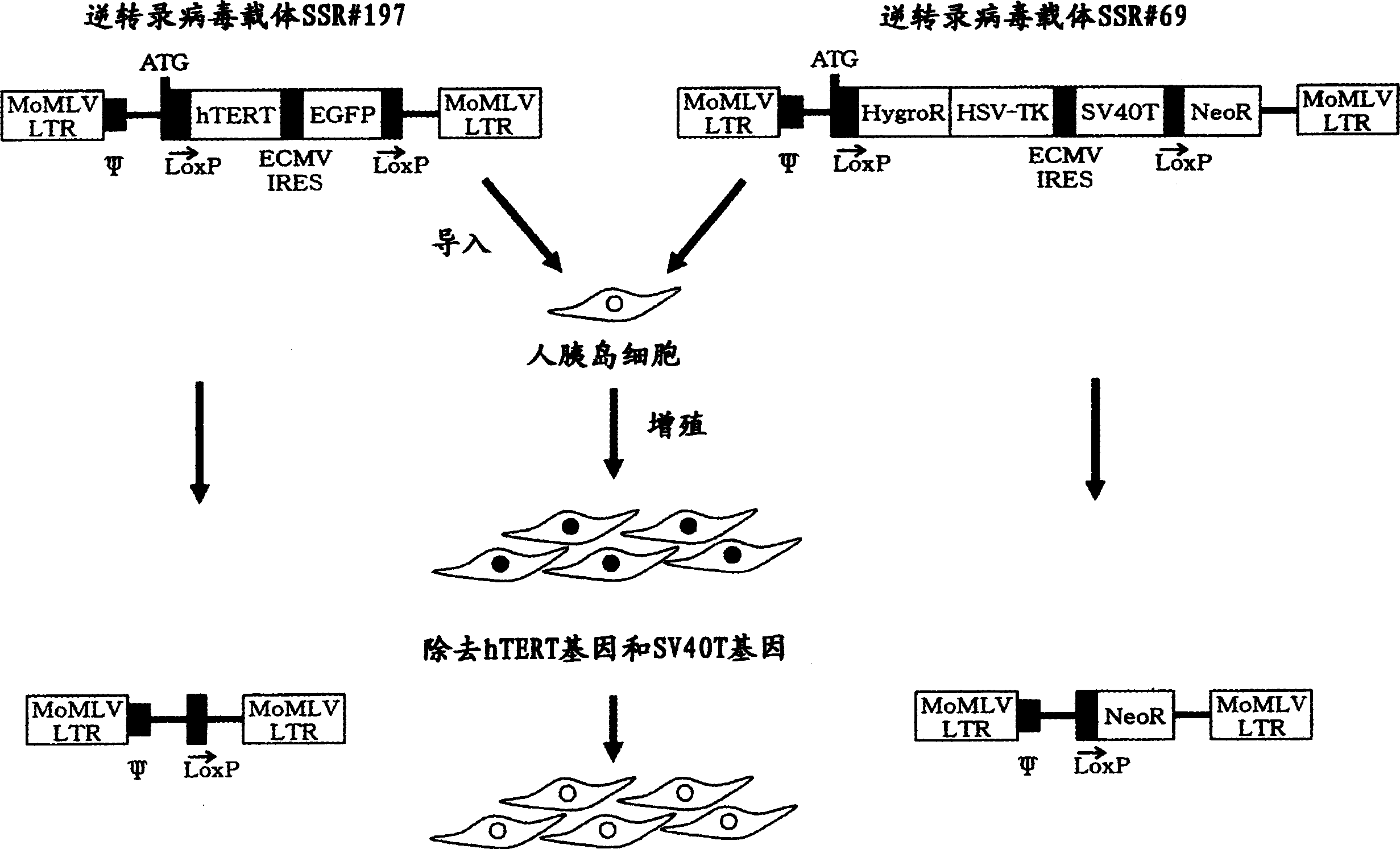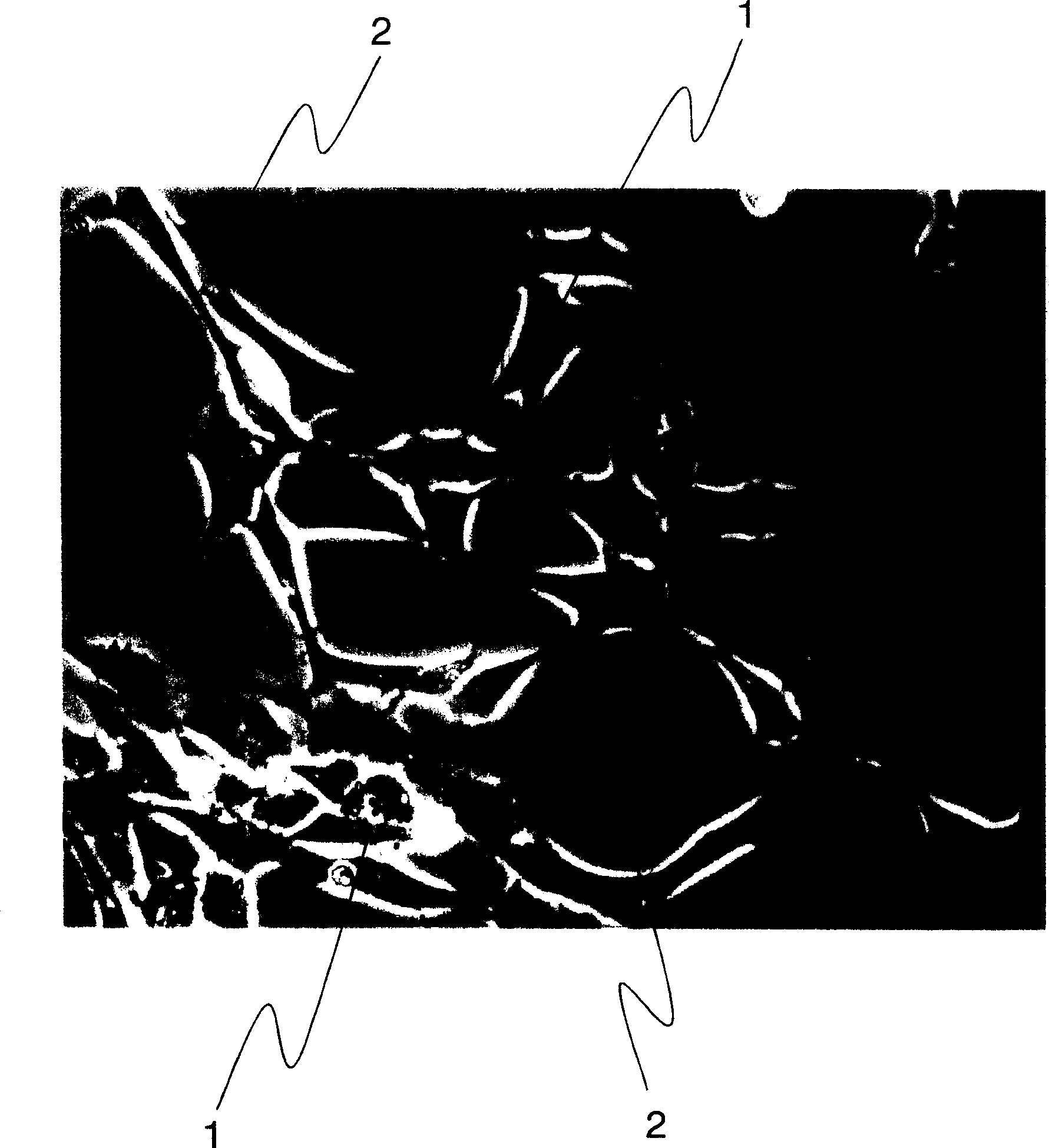Insulin-expressing human islet cell lines capable of reversibly proliferating and use thereof
一种胰岛细胞、可逆性的技术,应用在胰腺细胞、人工细胞构建体、遗传修饰的细胞等方向,能够解决导入基因困难、无法实现无限增殖等问题
- Summary
- Abstract
- Description
- Claims
- Application Information
AI Technical Summary
Problems solved by technology
Method used
Image
Examples
Embodiment 1
[0046]Example 1: Reversible immortalized human islet cell line NAKT-13 (deposited in the Patent Organism Depository Center of the National Institute of Advanced Industrial Science and Technology, the address is Central No. 6, East 1-1-1, Tsukuba City, Ibaraki, Japan (postal code 305-8566), the deposit date is September 4, 2003, and the deposit number is the establishment of FERM BP-08461)
[0047] Islet cells isolated from healthy individuals provided by the University of Alberta, Canada, by hand pickup under a stereomicroscope (STEMI, Carl Zeiss, Germany) (University of Alberta, Canada, Human Islet Transplantation Protocol, courtesy of Jonathan RT. Lakey 10 islet cells with spherical shape and clear shape were selected from the public and available to the public), and they were inoculated into T25 culture flasks. Use by adding 10% fetal calf serum (FCS, SIGMA company) in WILLIAM'S medium E (SIGMA company, St.Louis, U.S.), 10 -7 mol / l insulin (SIGMA company), 10 -6 mol / l dex...
Embodiment 2
[0051] Example 2: Removal of hTERT gene and SV40T gene from reversibly immortalized human islet cell line
[0052] The reversible immortalized human islet cell line obtained in Example 1 was cultured at 100,000 cells / ml in low-glucose DMEM (Giboco, Oakland, New Jersey) with 10% FCS, 10 mM nicotinamide, penicillin G / streptomycin medium. At 24 hours from the start of the culture, 1 MOI (MOI: multiplicity of infection) of the adenoviral vector AxCANCre expressing Cre recombinase was added to the medium, and infection was continued for 48 hours thereafter. The cells were washed twice with PBS to replace the medium. Such as Figure 5 As shown, the obtained recovered NAKT-13 cells have the characteristic that the cells naturally aggregate with each other to form a morphology similar to the normal islet structure.
Embodiment 3
[0053] Example 3: Insulin expression and morphology
[0054] The cells (each 50,000 cells) obtained in Example 1 and 2 were inoculated on a position covered with coverslips in a 6-well plate, using low glucose DMEM (Giboco Company, Oakland, New Jersey) with 10% FCS , 10 mM nicotinamide, and penicillin G / streptomycin as the culture medium, cultured for 24 hours until the cell density reached 60%. Next, the medium was replaced with a medium composed of high glucose DMEM (Giboco, Oakland, New Jersey) added with 10% FCS, 10 mM nicotinamide, penicillin G / streptomycin, and cultured for 6 hours.
[0055] After the culture, the expression of insulin in the cells was studied by immunostaining using a rabbit anti-human insulin antibody (manufactured by Dako Cytomation Co., Ltd., Kyoto, Japan). The staining results are shown in image 3 and 5 middle. and, Figure 4 and 6 respectively image 3 and 5 schematic diagram. image 3 and 5 Respectively represent the NAKT-13 cells obtai...
PUM
 Login to View More
Login to View More Abstract
Description
Claims
Application Information
 Login to View More
Login to View More - R&D
- Intellectual Property
- Life Sciences
- Materials
- Tech Scout
- Unparalleled Data Quality
- Higher Quality Content
- 60% Fewer Hallucinations
Browse by: Latest US Patents, China's latest patents, Technical Efficacy Thesaurus, Application Domain, Technology Topic, Popular Technical Reports.
© 2025 PatSnap. All rights reserved.Legal|Privacy policy|Modern Slavery Act Transparency Statement|Sitemap|About US| Contact US: help@patsnap.com



